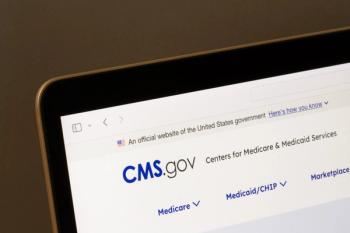
- Drug Topics April 2022
- Volume 166
- Issue 04
Creating Opportunities for Collaboration Between Community, Health System Pharmacy
Cross-practice collaboration is one of the best ways to improve patient outcomes.
Sarah Martin is a 45-year-old White woman who, 6 months after being hospitalized and receiving a type 2 diabetes diagnosis, goes to her community pharmacy to attend a diabetes education class. Before the class, she asks the pharmacist to check her blood sugar, which typically range from 250 mg/dL to 280 mg/dL and average 200 mg/dL while fasting.
When speaker Tamara A. McCants, PharmD, an assistant professor at Howard University asked the audience at an APhA 2022 session what opportunities for collaboration between community and health-systems pharmacy might look like when caring for Martin, suggestions began to fly. One attendee suggested point of care testing as an opportunity for collaboration, with community pharmacy taking the lead. But as another attendee pointed out, health systems pharmacies have access to labs. A third attendee asked who would be getting paid for these services, while a fourth suggested that Martin—who takes 1000 mg metformin twice daily and has gained 10 lbs in the past year—should have received a referral to a diabetes education class on hospital discharge.
“There’s no right or wrong answer,” said McCants,” but one thing I want us to highlight in this discussion is, there was a lot of finger pointing as to who should have done what, and why they didn’t, and ‘we need to do this,’ and ‘we’re better at that.’” And that is not the environment for collaboration.”
Opportunities for collaboration between community and health-systems pharmacists are widespread, said McCants, acknowledging that each practice type has access to different tools to help patients. Health-systems pharmacists can, for example, review and address labs. “No matter how much we want to do that in a community pharmacy, we just don’t have access to that, not yet,” she said.
When providing transitional care services—including medication counseling, bedside delivery, medication access, and treatment monitoring—patients benefit from cross-practice collaboration. Pharmacists are, after all, perhaps the health care provider who is most aware of a patient’s health insurance plan and the medications they can access.
Comprehensive medication management is another opportunity for collaboration; community and health systems pharmacists can both develop a care plan to achieve optimal outcomes, ensure that the patient agrees with—and understands—their care plan, document steps and clinical status, and conduct follow-up evaluations. Disease states like diabetes, psychiatric conditions, and HIV can all be targeted for collaborative efforts—due partially to requirements to manage these diseases, but also because these conditions are financially beneficial to both community and health systems settings. “In order for us to have successful collaboration, there has to be a real conversation about who is going to pay,” said McCants, “and what the payment mechanisms are.”
When it comes to the fictional Sarah Martin, “the number one incentive here…is her insurance company does not want her to end up back in the hospital,” McCants pointed out. To collaborate successfully, start there.
“Before I did this presentation, I would have been just like you, trained in community pharmacy and knowing what community pharmacy can do. But we’re still not the best equipped because we don’t have access to all of the information,” McCants said. “And so, we have to understand, and be okay with, who has access to information, and who it makes the most financial sense for.
“As a profession…we have to talk to each other about all of the biases we have,” she added. “We have to lay that all aside if real collaboration—successful collaboration—is going to occur. The only way to do that is to put the patient in the forefront.”
Reference
McCants TA. Health system and community pharmacy collaboration. Presented at: American Pharmacists Association 2022 Annual Meeting & Exposition; March 18-21, 2022; San Antonio, TX
Articles in this issue
over 3 years ago
Empty Nails Are the Cure for What Ailed Themover 3 years ago
Workforce Challenges for Health System Pharmacyover 3 years ago
Public Health and Pharmacy Intersect, Providing Opportunitiesover 3 years ago
Best Practices to Prevent Vaccination Errorsover 3 years ago
OTC Remedies Help With Oral Pain Managementover 3 years ago
Manage Your Stress for Your Best Healthover 3 years ago
OTC Update Reviews New Products, Recalls Since 2020Newsletter
Pharmacy practice is always changing. Stay ahead of the curve with the Drug Topics newsletter and get the latest drug information, industry trends, and patient care tips.





















































































































































